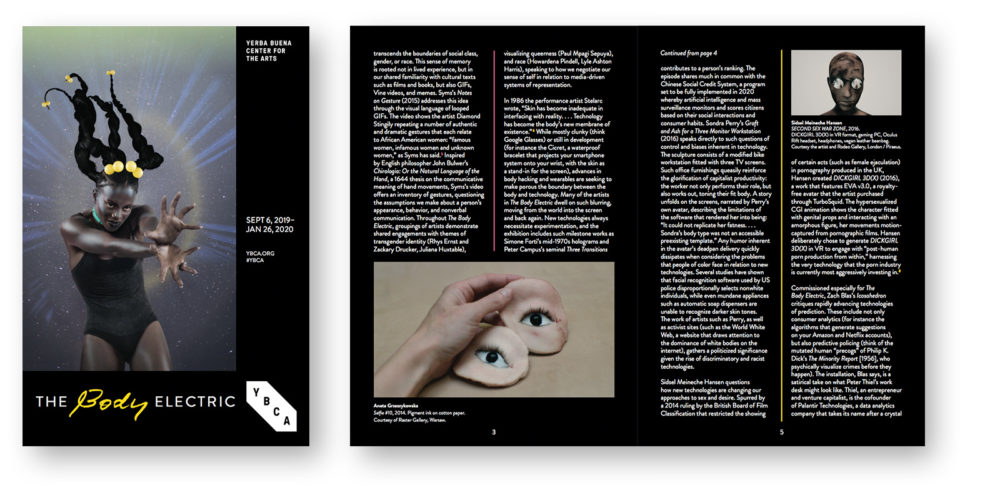YBCA presents the West Coast debut of The Body Electric, an expansive array of more than 70 works revealing the ways that technology changes our collective understanding of the body, everyday life, and sense of self.
Looking across the past 50 years, The Body Electric presents works by an intergenerational and international group of artists who have seized upon the screen as a place to rethink the body and identity. Featuring video, sculpture, photographs, virtual reality, and more, from over 45 artists and collectives, the exhibition places a particular emphasis on gender, sexuality, race, and class.
The Body Electric creates a family tree for a younger generation of artists, deepening our understanding of how artists have always been at the forefront of working with new technologies to explore perceptions of identity and the body. The exhibition is a crucial corrective in highlighting the many women and artists of color who have historically been overlooked in a field commonly understood as male-dominant.
From the inviting and familiar to the provocative and unsettling, the works in the exhibition move nimbly from the material world to the space of the screen and back again. The Body Electric highlights five themes—”Beyond the Frame,” “Performing for the Camera,” “Extending the Self,” “The Power of Images,” and “The Malleable Body”—to explore the real and the virtual, the organic and the artificial.
The Body Electric is organized by the Walker Art Center. The exhibition is made possible by generous support from the Carl & Marilynn Thoma Art Foundation. Additional support provided by Ellen and Jan Breyer and the David and Leni Moore Family Foundation.
Beyond the Frame
The Body Electric begins with a pioneering generation of artists active in the mid-1960s—Joan Jonas, Shigeko Kubota, Charlotte Moorman, Nam June Paik, and Wolf Vostell—for whom the television was both the subject and the object of their expanded practices spanning performance, sculpture, and the moving image. Revisited for the exhibition, Joan Jonas reimagines her 1974 performance Funnel as a stage set for new audiences.
Performing for the Camera
Works by Sanja Iveković, Howardena Pindell, Paul Mpagi Sepuya, Amalia Ulman, and others chart a history of artists who turn the lens of the camera onto their own bodies to create personal spaces of performance, from the 1960s Portapak camera to today’s selfie.
Extending the Self
Disembodied beings and digital avatars populate contributions by Laurie Anderson, Ed Atkins, Pierre Huyghe, and Sidsel Meineche Hansen, among others, while installations by Anicka Yi and Trisha Baga explore the slippery ambiguity of materials poised between the digital and the analog, the real and the rendered. This section features Zach Blas’s new work Icosahedron, an artificially intelligent crystal ball trained in the same literature that influences the tech industry’s approach to predicting the future. Commissioned for the exhibition, Icosahedron operates between high fantasy and social reality to predict the fictions and futures of Silicon Valley’s tech-utopia.
The Power of Images
For Lynn Hershman Leeson, Sondra Perry, Martine Syms, and Dara Birnbaum, the lens of the camera creates a space to rethink the representation of sociopolitical identities and to question the structures that govern our understanding of race and gender.
The Malleable Body
The presentation concludes with works by Josh Kline, Carolyn Lazard, Candice Lin and Patrick Staff, Andrea Crespo, Rhys Ernst, and Marianna Simnett that reflect on the malleability of the body, speaking to themes of care, surgical intervention, and chemical and biological processes imperceptible to the human eye.
First Floor Galleries






